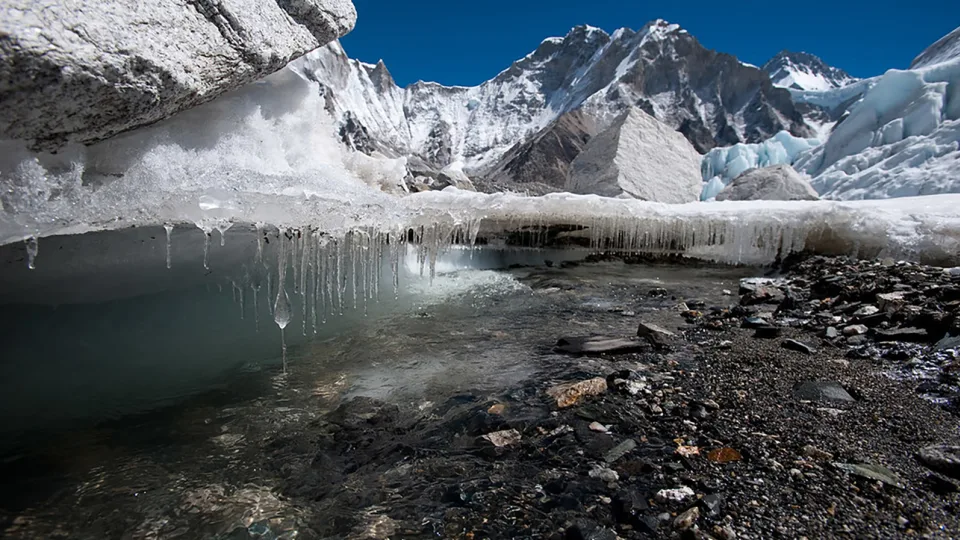
Climate Change Threatens World’s Highest Peaks
Climate change is escalating at an alarming rate. This has put the world’s highest peaks, vital sources of freshwater, under significant threat. These peaks also host diverse ecosystems, adding to their importance. However, they now face a bleak future due to climate change. A new report by the International Centre for Integrated Mountain Development (ICIMOD) sheds light on this. The report suggests that under severe climate scenarios, these peaks could lose up to 80% of their volume. This could happen by the end of this century. This prediction is alarming and carries serious implications. It could potentially affect millions of people who rely on these resources.
Glacial Melt Accelerates
The ICIMOD report provides a comprehensive analysis of climate change impacts across a vast area of 1.6 million square miles, stretching from Afghanistan to Myanmar. The study reveals alarming findings about the rate of glacial melt in the Hindu Kush and Himalaya mountain ranges. It was observed that during the 2010s, these glaciers melted at a rate 65% faster than in the previous decade. This significant increase in the rate of glacial melt underscores the immediate and tangible effects of escalating global temperatures. The findings serve as a stark reminder of the urgent need for effective climate action to mitigate these impacts.
Freshwater Resources at Risk
The glaciers in this region serve as a critical water source, feeding 12 rivers that sustain two billion people across 16 nations, including populous countries like China, India, and Pakistan. However, the report raises a concerning paradox. As these glaciers melt rapidly due to rising temperatures, they initially release an excess of water. Yet, in the long run, this climate change could ironically lead to severe water shortages, posing a significant threat to these countries’ water security.
Worsening Projections
The latest findings from the group reveal a concerning escalation in previous climate projections. If global temperatures rise by 1.5 to 2 degrees Celsius, the world’s loftiest mountain regions could witness a loss of 30% to 50% of their glacial volume by the close of this century. The situation becomes even more alarming if global warming surpasses the 3 degrees Celsius mark. Under such circumstances, the glaciers in Nepal and Bhutan, part of the eastern Himalayas, could face a staggering loss of up to 80% of their ice. This highlights the urgent need for comprehensive climate action to mitigate these potential impacts.
Impact on Mountain Communities and Biodiversity
The accelerated melting of glaciers poses a significant threat to the livelihoods of millions residing in high-altitude communities and downstream areas. These individuals often rely on glacial waters for agriculture and livestock maintenance. However, the initial flooding caused by rapid glacial melt could inundate farmlands, followed by periods of drought as water sources diminish. Furthermore, the report underscores the potential impact on the region’s biodiversity. The diverse ecosystems, home to unique species, face severe threats due to these climatic changes. The balance of these ecosystems could be disrupted, leading to a loss of biodiversity and the extinction of certain species.
Urgent Call for Climate Action
In a nuthsell, The report underscores the urgent need for climate action. The potential loss of the cryosphere and its far-reaching consequences are too vast to contemplate. Leaders must act now to prevent a catastrophe, safeguarding the future of millions of people and the health of our planet.


